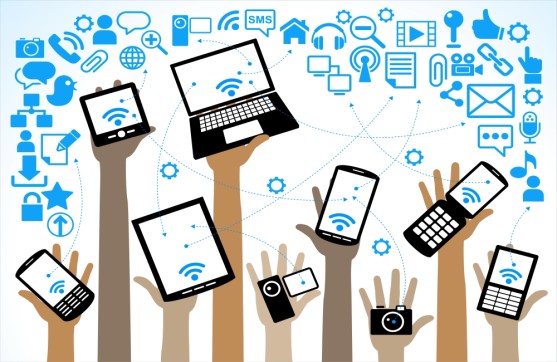Mobile technology is constantly evolving, with new advancements and innovations being made all the time. Several technologies in mobile networking have been developed in recent years and many more are currently being researched or are in the early stages of adoption. Here are a few examples:
1. 5G: 5G is the next generation of mobile networks and provides faster speeds, lower latency, and greater capacity than previous generations. It is designed to support a wide range of applications, including virtual and augmented reality, autonomous vehicles, and the Internet of Things (IoT).
2. Wi-Fi 6 (802.11ax): Wi-Fi 6 offers faster speeds, greater capacity, and improved performance in crowded areas. It is also designed to be more energy-efficient, which can help extend the battery life of mobile devices.
3. Edge computing: Edge computing allows data processing to occur closer to the device or sensor that generates it, reducing latency and improving response times.
4. Mobile Edge Computing (MEC): MEC is a network architecture that allows cloud computing capabilities to be deployed at the edge of the network, closer to mobile users.
5. Network Function Virtualization (NFV): NFV is a technology that allows network functions to be virtualized and run on commodity hardware, making it easier to deploy new services and applications.
6. Software-defined networking (SDN): SDN separates the network control plane from the data plane, making it easier to manage and configure networks.
7. Internet of Things (IoT): IoT is a network of physical devices, vehicles, home appliances, and other items embedded with electronics, software, sensors, and connectivity that enables these objects to connect and exchange data.
Here’s a more detailed explanation of the emerging technologies in mobile:
1. Foldable screens: Foldable screens are displays that can be folded or unfolded to increase or decrease the size of the screen. They allow for larger displays in smaller form factors, enabling new use cases for smartphones, such as multitasking and improved gaming experiences.
2. 5G connectivity: 5G networks are the latest wireless network technology, which provides faster internet connectivity and lower latency compared to previous generations of wireless technology. This enables new applications and services, such as augmented reality and virtual reality, which require high-speed connectivity and low latency.
3. High refresh rate displays: High refresh rate displays have a higher number of refreshes per second compared to standard displays, resulting in smoother scrolling and animations. This results in a better user experience, especially for gamers and those who consume a lot of media on their phones.
4. AI-powered cameras: AI-powered cameras use machine learning algorithms to automatically adjust camera settings to improve picture quality, and can also help with object recognition and scene detection. This results in better photos and videos, with less effort required from the user.
5. Biometric authentication: Biometric authentication uses the unique physical characteristics of a user, such as their face or fingerprint, to verify their identity. This provides an added layer of security and convenience, as users can unlock their phones without having to enter a password.
6. Augmented reality: Augmented reality (AR) technology is being integrated into mobile devices, enabling users to superimpose digital content onto the real world. This has numerous applications, from gaming and entertainment to education and training.
7. Virtual reality: Virtual reality (VR) technology is also being integrated into mobile devices, providing users with immersive experiences that transport them to virtual worlds. This has potential applications in gaming, education, and training, as well as in industries such as architecture and real estate.
8. Wireless charging: Wireless charging uses electromagnetic fields to transfer energy from a charging pad to a device, eliminating the need for cables. This makes it easier to charge devices on the go, without having to worry about finding an outlet or carrying a charging cable.
Overall, these technologies are helping to transform the mobile networking landscape, enabling new applications and services and improving the user experience.










Leave a Reply